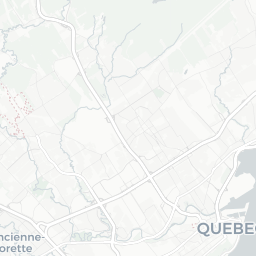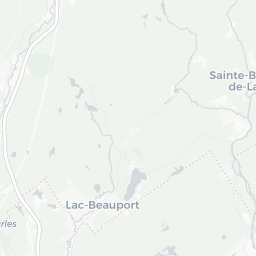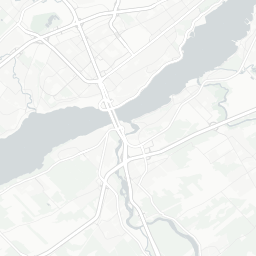ashton
(code volé à un dude qui a fait la même chose pour les costco à Anchorage, Alaska)
Petit projet avec utilisation de: - osmdata pour trouver les ashton - (new to me) de mapboxapi pour les isochrones - et raster/fasterize pour combiner les multiples isochrones
suppressMessages(
suppressWarnings({
library(mapboxapi)
library(tidyverse)
library(mapdeck)
library(osmdata)
library(leaflet)
library(sf)
library(raster)
library(rgeos)
library(fasterize)
library(rgdal)
library(sf)
library(dplyr)
library(purrr)
library(mapview)
})
)step 1 : trouver les ashton avec osmdata
#
# mapboxapi::mb_access_token(Sys.getenv("mapbox"),
# install = TRUE,
# overwrite = TRUE)
bb <- getbb("Quebec, QC")
x <- bb %>% opq() %>%
add_osm_feature(key= "name", value = c("ASHTON", "ASTHON"),
value_exact = FALSE, match_case = FALSE
)%>%
osmdata_sf()
mapview::mapview(x$osm_points)step 2 : trouver les isochrone 1 à 30 minutes de marche autour des ashton
points <- x$osm_points %>%
filter(!(osm_id %in% c(1750439777,1750439789, 1750439808, 1750439833, 1750439845, 1616297363, 1616297367, 1616297399))) ## multiple points for a single greasy spoon
string_latlon <- points %>% st_coordinates() %>% as_tibble() %>% mutate(latlon = paste0( X, ",", Y)) %>% pull(latlon) # this is ugly.. find better way
isochrones <- map(string_latlon,
~ mb_isochrone(location =.x, profile = "walking", time = 1:30 ))
iso_sf <- bind_rows(isochrones)
mapview(iso_sf)step 3 : combiner tous les polygons et garder la valeur du ashton le plus proche avec fasterize::raster et fasterize::fasterize
# iso_union <- iso_sf %>%
# group_by(time) %>%
# summarise()
#
# mapview(iso_union)
isos_proj <- st_transform(iso_sf, 32619) # on converti en UTM pour faire le raster
template <- fasterize::raster(isos_proj, resolution = 100) # on crée un template de raster 100x100
iso_surface <- fasterize::fasterize(isos_proj, template, field = "time", fun = "min") ## opour chaque carré des rasters on prend le minimum de time de tous les polygones qui lui touche
pal <- colorNumeric("viridis", isos_proj$time, na.color = "transparent")
leaflet() %>%
addProviderTiles(providers$Stamen.Toner) %>%
addRasterImage(iso_surface, colors = pal, opacity = 0.5) %>%
addLegend(values = isos_proj$time, pal = pal,
title = "Temps de marche vers le Ashton le plus proche (minutes)") %>%
addMarkers(data = x$osm_points)# Warning in showSRID(uprojargs, format = "PROJ", multiline = "NO", prefer_proj =
# prefer_proj): Discarded ellps WGS 84 in Proj4 definition: +proj=merc +a=6378137
# +b=6378137 +lat_ts=0 +lon_0=0 +x_0=0 +y_0=0 +k=1 +units=m +nadgrids=@null
# +wktext +no_defs +type=crs# Warning in showSRID(uprojargs, format = "PROJ", multiline = "NO", prefer_proj =
# prefer_proj): Discarded datum World Geodetic System 1984 in Proj4 definition# Warning in showSRID(uprojargs, format = "PROJ", multiline = "NO", prefer_proj =
# prefer_proj): Discarded ellps WGS 84 in Proj4 definition: +proj=merc +a=6378137
# +b=6378137 +lat_ts=0 +lon_0=0 +x_0=0 +y_0=0 +k=1 +units=m +nadgrids=@null
# +wktext +no_defs +type=crs# Warning in showSRID(uprojargs, format = "PROJ", multiline = "NO", prefer_proj =
# prefer_proj): Discarded datum World Geodetic System 1984 in Proj4 definition# Warning in colors(.): Some values were outside the color scale and will be
# treated as NA


















